Tom's Hardware Verdict
The ROG Strix has high performance and silent operation, but it is notably more expensive than the competition.
Pros
- +
Full power at 47 degrees Celsius
- +
High performance
- +
Efficient
- +
Silent operation
- +
Good build quality
- +
Long cables
- +
2x EPS & 4x PCIe connectors
- +
Fully modular
Cons
- -
Expensive
- -
Transient response at 3.3V
- -
Less than 70% efficiency with 2% load
- -
Not compatible with the alternative sleep mode
- -
Not efficient 5VSB rail
- -
Small distance between peripheral connectors
Why you can trust Tom's Hardware
The ROG Strix 650 unit offers high performance since it uses the popular Seasonic Focus Plus Gold platform, and it features silent operation. Those benefits come at a high price, though, and with notably less money, you can get yourself either a Seasonic Focus Plus Gold with similar capacity, or a Corsair RM650x which achieves even lower noise output. Asus should try to lower this product's price and get closer to the competing offerings, to have an advantage over them.
The ROG Strix PSU line only has two members, for now, with 650W and 750W max power. In this review, we will evaluate the 650W model, which has enough power to meet the requirements of a system featuring a single high-end graphics card, and a strong, multi-core CPU with both clocked at stock speeds. If you plan to overclock heavily, you should get a much stronger power supply since power consumption increases higher-than-stock speeds.

Product Photos



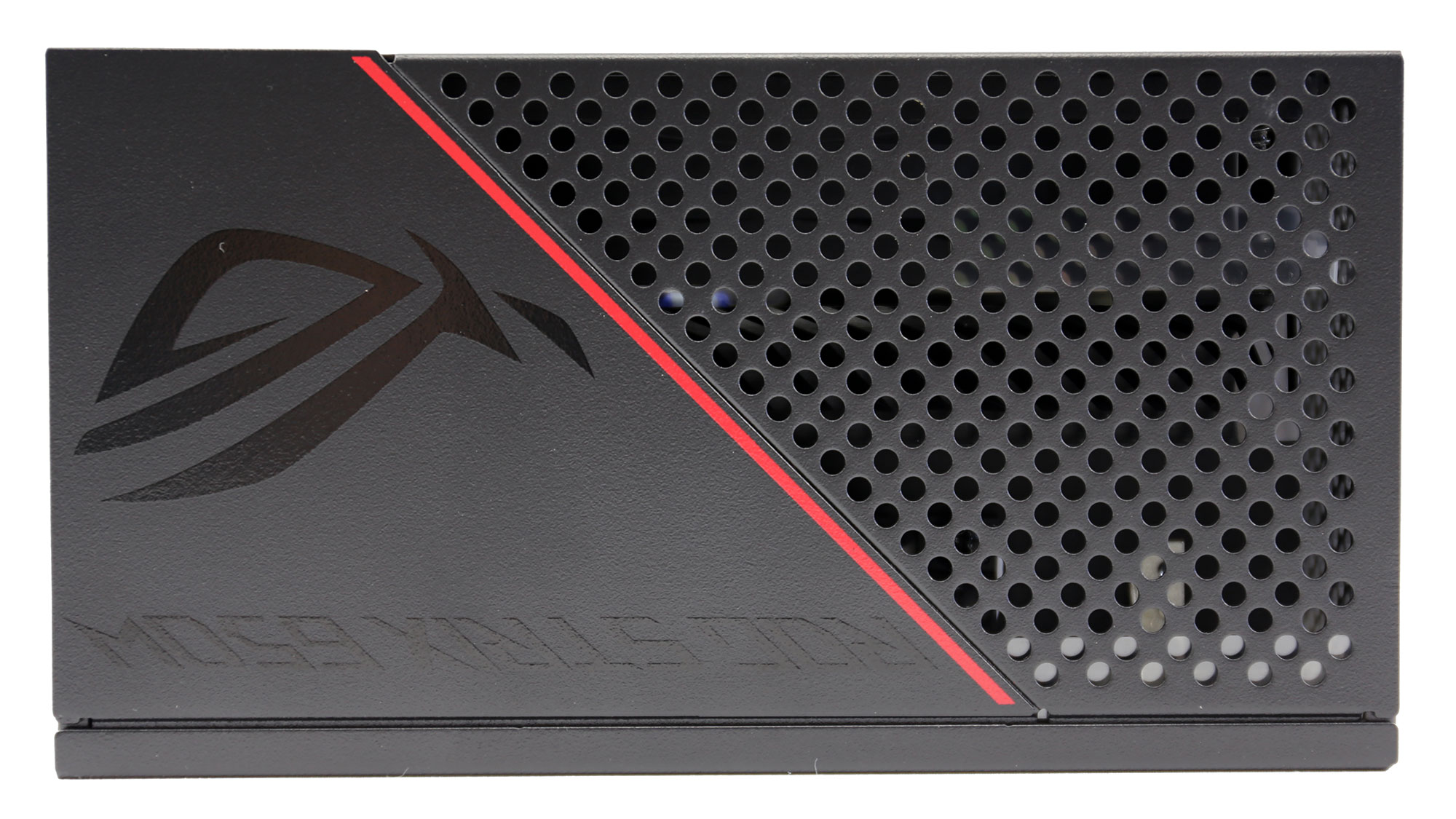




Although the ROG Strix 650 shares the same platform with the Seasonic Focus Plus Gold with similar capacity, it has larger dimensions because it uses beefier heat sinks, that requires a larger PCB. Thanks to the larger heat sinks, the fan speed profile can be much more relaxed and this leads to a low overall noise output, despite the use of a double ball-bearing (DBB) fan.
The DBB fans have high tolerance at increased operating temperatures, something that is not the case with Fluid Dynamic Bearing (FDB) ones, but they also produce higher noise levels under the same conditions. This is why they are not preferred in power supplies, where FDB fans dominate. Nevertheless, if you can pair a DBB fan with an optimal fan speed profile, the outcome can be 100% satisfactory, as is the case with both ROG Strix models.

Product Photos






Specifications
|
Manufacturer (OEM) |
Seasonic |
|
Max. DC Output |
650W |
|
Efficiency |
80 PLUS Gold, ETA-A (88-91%) |
|
Noise |
LAMBDA-A (20-25 dB[A]) |
|
Modular |
✓ (Fully) |
|
Intel C6/C7 Power State Support |
✓ |
|
Operating Temperature (Continuous Full Load) |
0 - 50°C |
|
Over Voltage Protection |
✓ |
|
Under Voltage Protection |
✓ |
|
Over Power Protection |
✓ |
|
Over Current (+12V) Protection |
✓ |
|
Over Temperature Protection |
✓ |
|
Short Circuit Protection |
✓ |
|
Surge Protection |
✓ |
|
Inrush Current Protection |
✓ |
|
Fan Failure Protection |
✗ |
|
No Load Operation |
✓ |
|
Cooling |
140mm Double Ball-Bearing Fan (FB14025BH) |
|
Semi-Passive Operation |
✓ (selectable) |
|
Dimensions (W x H x D) |
150 x 85 x 160mm |
|
Weight |
1.76 kg (3.88 lb) |
|
Form Factor |
ATX12V v2.4, EPS 2.92 |
|
Warranty |
10 Years |
Power Specifications
| Rail | 3.3V | 5V | 12V | 5VSB | -12V |
| Max. Power | Amps | 20 | 20 | 54 | 3 |
| Watts | 100 | 648 | 15 | 3.6 | |
| Total Max. Power (W) | 650 |
Cables and Connectors
| Modular Cables | ||||
| Description | Cable Count | Connector Count (Total) | Gauge | In Cable Capacitors |
| ATX connector 20+4 pin (610mm) | 1 | 1 | 18-22AWG | No |
| 4+4 pin EPS12V (1000mm) | 2 | 2 | 18AWG | No |
| 6+2 pin PCIe (680mm+80mm) | 2 | 4 | 18AWG | No |
| SATA (450mm+115mm+115mm+115mm) | 1 | 4 | 18AWG | No |
| SATA (410mm+150mm+150mm+150mm) | 1 | 4 | 18AWG | No |
| 4 pin Molex (450mm+120mm+120mm) | 1 | 3 | 18AWG | No |
| AC Power Cord (1400mm) - C13 coupler (EU) | 1 | 1 | 18AWG | - |
| AC Power Cord (1370mm) - C13 coupler (British) | 1 | 1 | 18AWG | - |
The amount of provided connectors is satisfactory, and the ATX, EPS, and PCIe cables are long. The peripheral cables should be a bit longer, though, and above all, the distance between all corresponding connectors should be 150mm, at least. Currently, only one SATA cable has 150mm clearance between its connectors.

Cable Photos





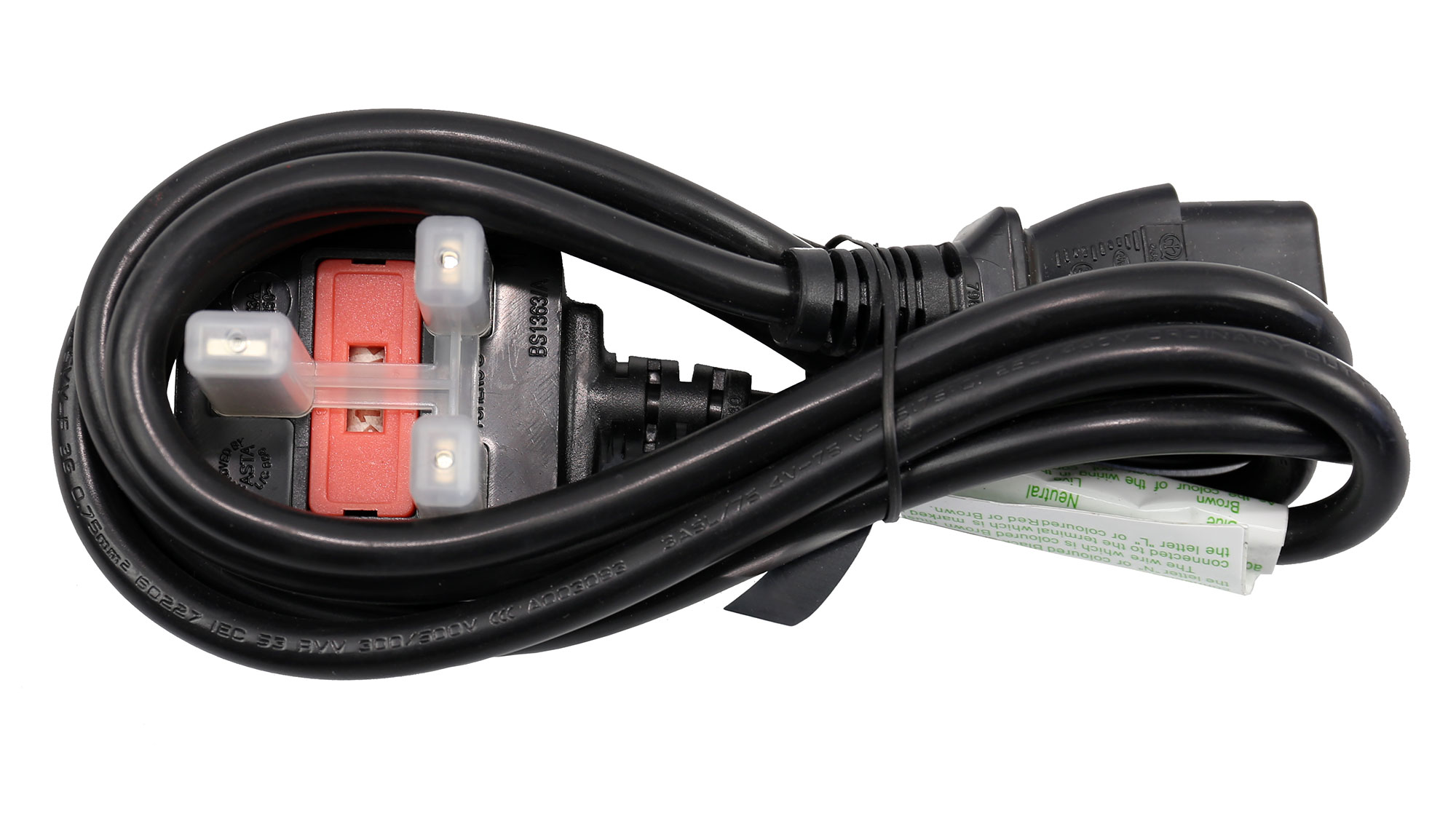

Component Analysis
We strongly encourage you to have a look at our PSUs 101 article, which provides valuable information about PSUs and their operation, allowing you to better understand the components we're about to discuss.
| General Data | |
| Manufacturer (OEM) | Seasonic |
| PCB Type | Double Sided |
| Primary Side | |
| Transient Filter | 4x Y caps, 2x X caps, 2x CM chokes, 1x MOV, 1x Discharge IC |
| Inrush Protection | NTC Thermistor & Relay |
| Bridge Rectifier(s) | 2x GBU1006 (600V, 10A @ 100°C) |
| APFC MOSFETS | 2x Infineon IPA50R190CE (500V, 15.7A @ 100°C, 0.19Ohm) |
| APFC Boost Diode | 1x NXP BYC8-600 (600V, 8A @ 109°C) |
| Hold-up Cap(s) | 1x Hitachi (400V, 470uF, 2,000h @ 105°C, HU) |
| Main Switchers | 4x Champion GPT10N50ADG (500V, 9.7A, 0.7Ohm) |
| APFC Controller | Champion CM6500UNX |
| Resonant Controllers | Champion CM6901T6 |
| Topology | Primary side: Full-Bridge & LLC converter Secondary side: Synchronous Rectification & DC-DC converters |
| Secondary Side | |
| +12V MOSFETS | 4x Nexperia PSMN2R6-40YS (40V, 100A @ 100°C, 3.7mOhm @ 100°C) |
| 5V & 3.3V | DC-DC Converters:4x ON Semiconductor NTMFS4C028N (30V, 12.3A @ 80°C, 4.73mOhm) PWM Controllers: ANPEC APW7159C |
| Filtering Capacitors | Electrolytic: 3x Nippon Chemi-Con (105°C, W), 5x Nippon Chemi-Con (4-10,000h @ 105°C, KY), 5x Nichicon (4-10,000h @ 105°C, HE),1x Rubycon (3-6,000h @ 105°C, YXG) Polymer: 25x FPCAP |
| Supervisor IC | Weltrend WT7527V (OCP, OVP, UVP, SCP, PG |
| Fan Model | Everflow FB14025BH (135mm, 12V, 0.60A, Ball Bearing Fan) |
| 5VSB Circuit | |
| Rectifier | 1x PFC P10V45SP SBR (45V, 10A) |
| Standby PWM Controller | Excelliance MOS EM8569 |
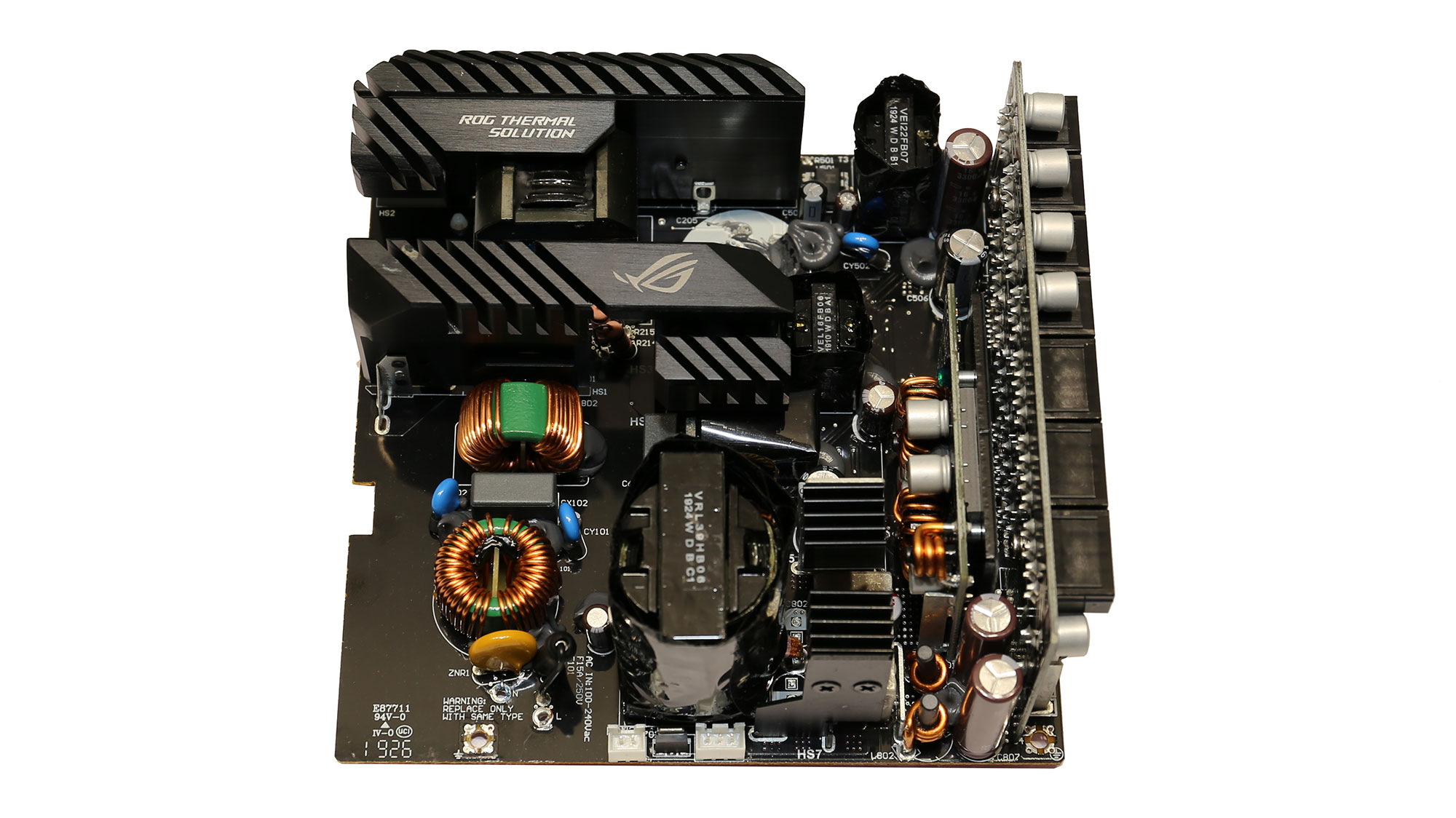
Overall Photos


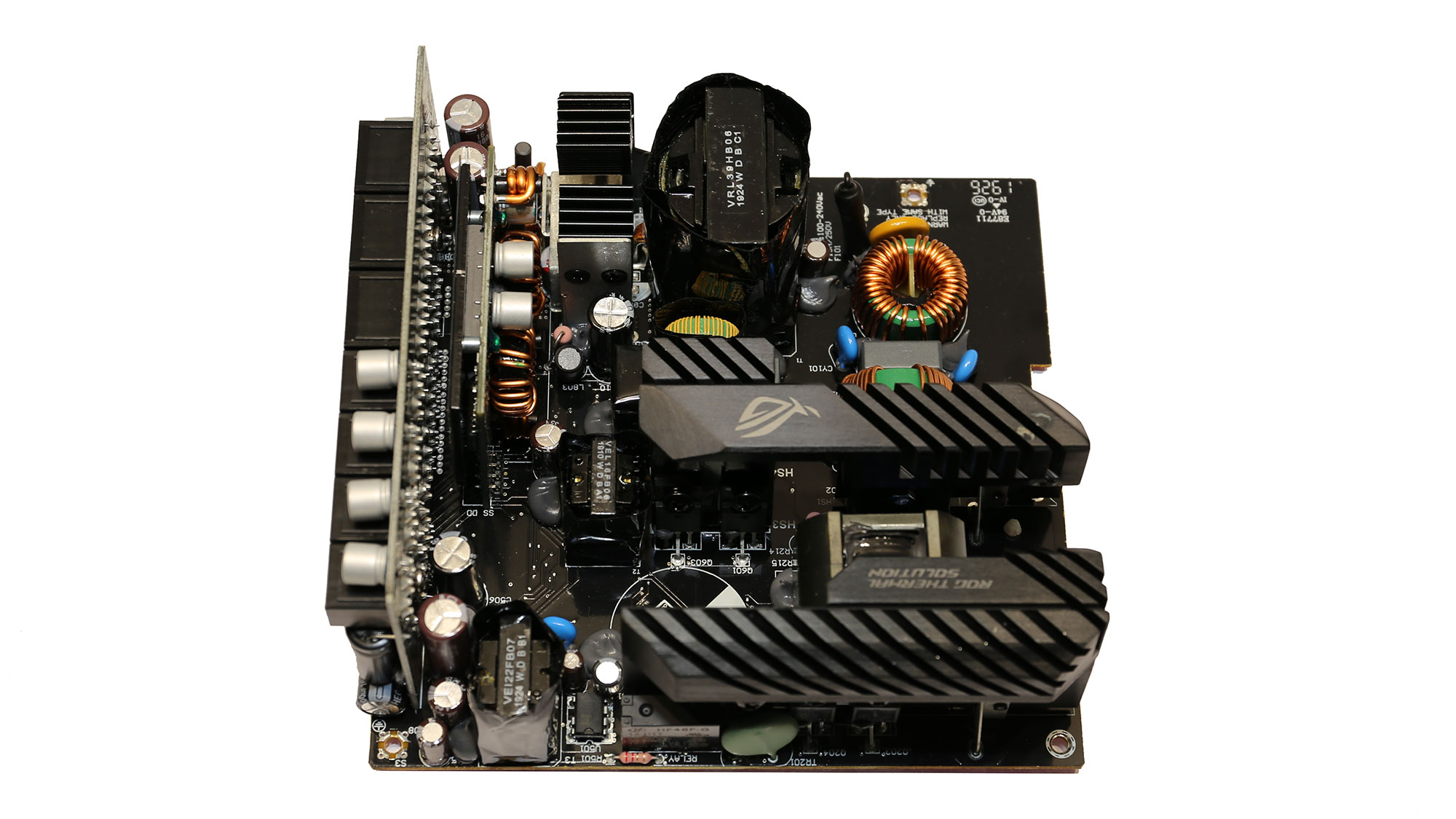
The ROG Strix line uses a modified Seasonic Focus Plus platform. The major differences are depicted on the larger dimensions of the PCB, which allows the installation of large heat sinks, and the different fan which uses double ball-bearings. The build quality is high and the same goes for the filtering caps, which is among the most important components in a power supply (and not only).
Get Tom's Hardware's best news and in-depth reviews, straight to your inbox.

Transient filter





The transient filter has all the necessary components to block all incoming and outcoming EMI noise, on paper at least.
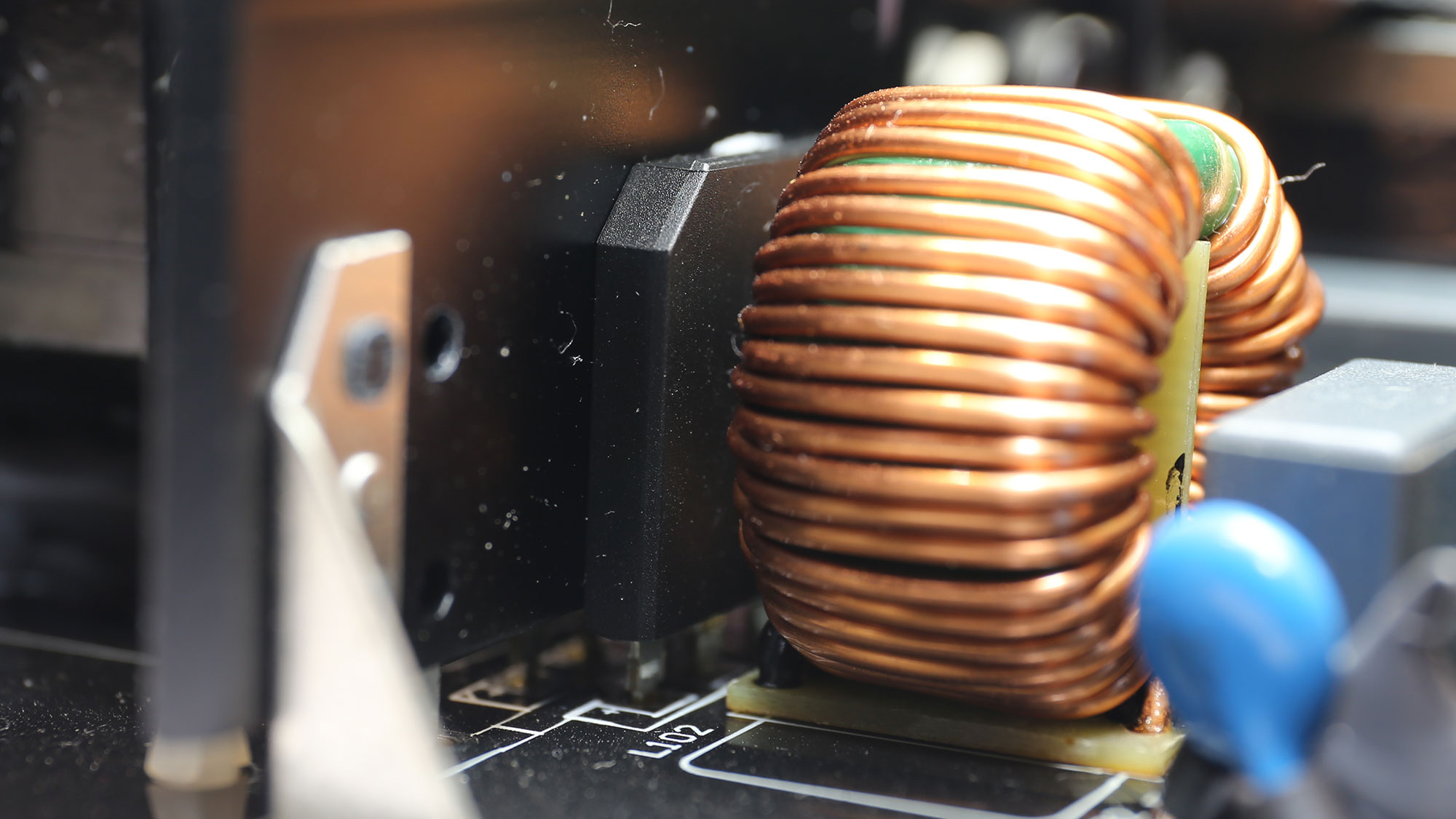
Bridge rectifiers

Both bridge rectifiers are bolted on the large, primary heat sink.

APFC converter


Right in front of the APFC converter's FETs and boost diode, we find the NTC thermistor and its bypass relay, which protect against large inrush currents.

Main FETs and primary transformer




A full-bridge topology is utilized along with an LLC resonant converter, which boosts efficiency. Unfortunately, there is no burst-mode operation at light loads, so the efficiency with 2% of the PSU's max-rated-capacity cannot reach 70%.

12V FETs and VRMs


Four Nexperia FETs handle the +12V rail, which feeds a pair of DC-DC converters for the generation of the minor rails.

Filtering caps


The majority of the filtering caps belong to good lines of Japanese manufacturers. Besides electrolytic caps, many polymers are also used.

5VSB Circuit

The 5VSB circuit uses an Excelliance MOS EM8569 standby controller along with a pair of SBRs, for the rectification in both its primary and secondary sides.

Modular board front


At the face of the modular board, several polymer caps, along with three electrolytic ones, provide an extra ripple suppression layer.

Soldering quality

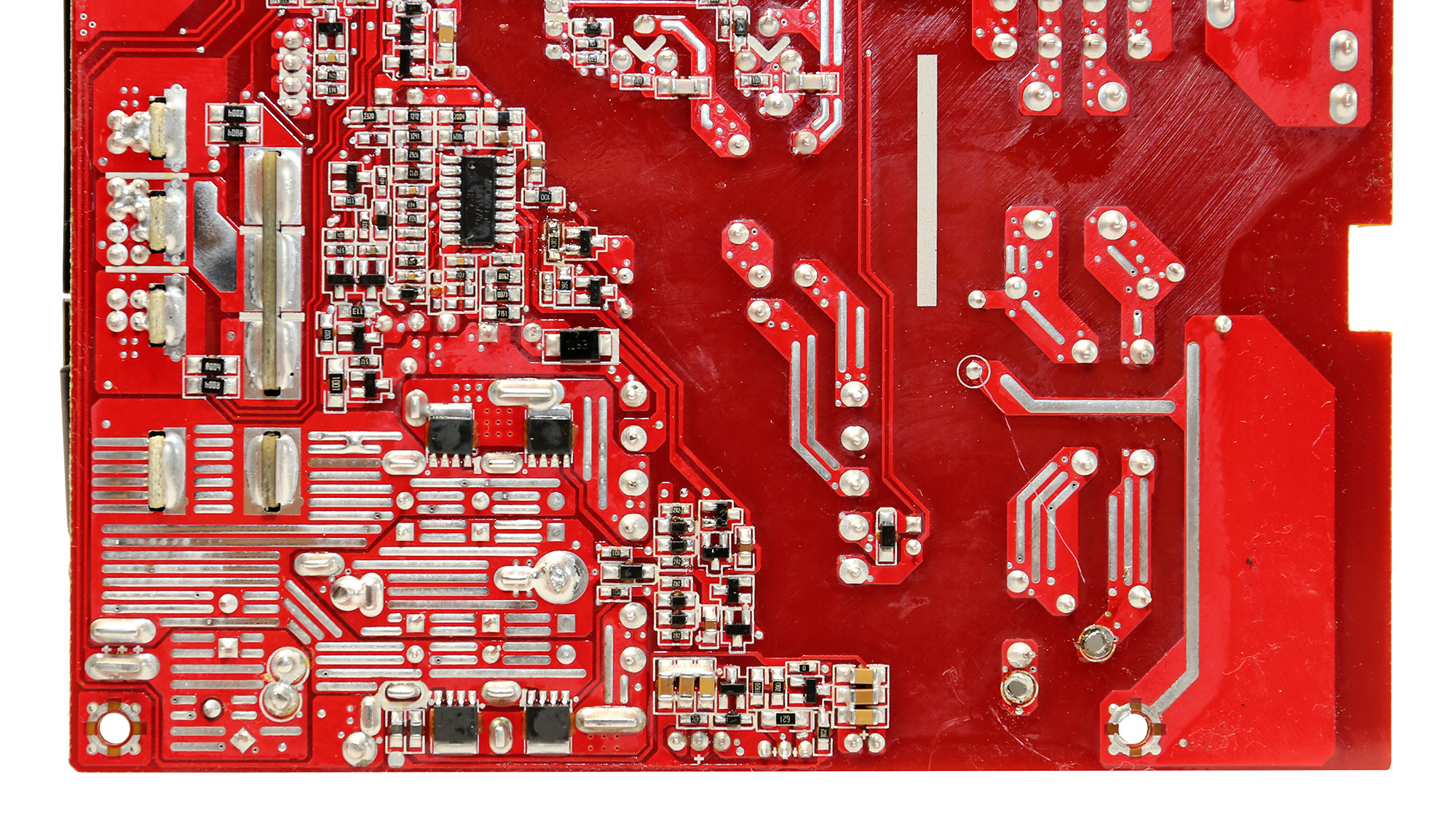


The soldering quality is good. We didn't expect anything less, from a Seasonic-made power supply.

Cooling fan

Contrary to the general trend, Asus used a double ball-bearing fan in this unit. Thanks to the relaxed fan profile, the output noise is low.
MORE: Best Power Supplies
MORE: How We Test Power Supplies
MORE: All Power Supply Content
Current page: Specifications and Part Analysis
Next Page Load Regulation, Hold-Up Time, Inrush Current, Efficiency and Noise
Aris Mpitziopoulos is a contributing editor at Tom's Hardware, covering PSUs.